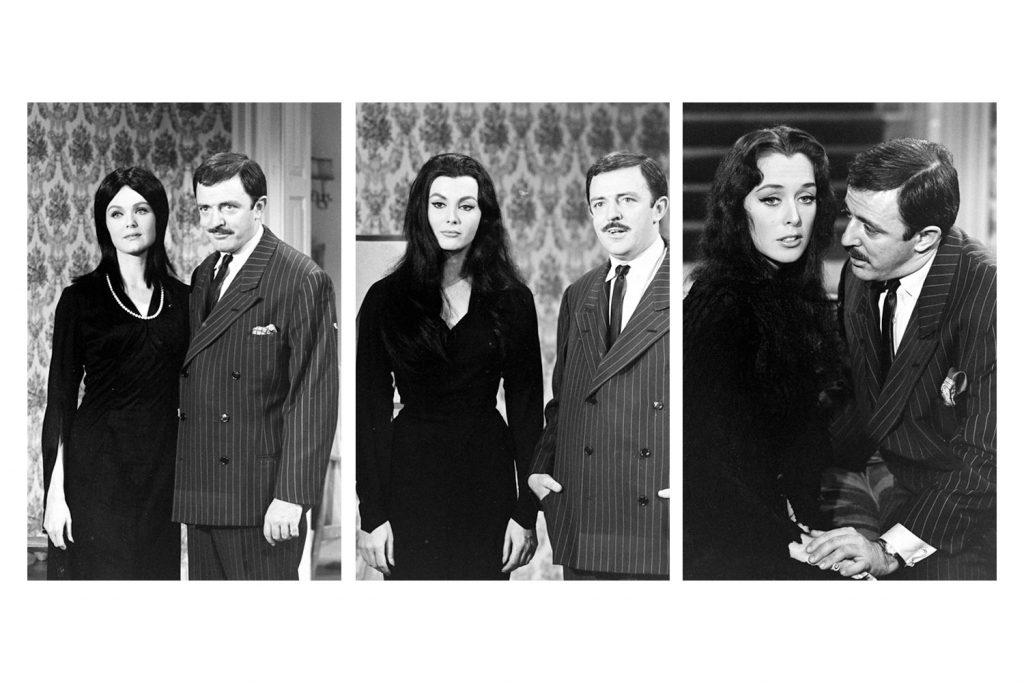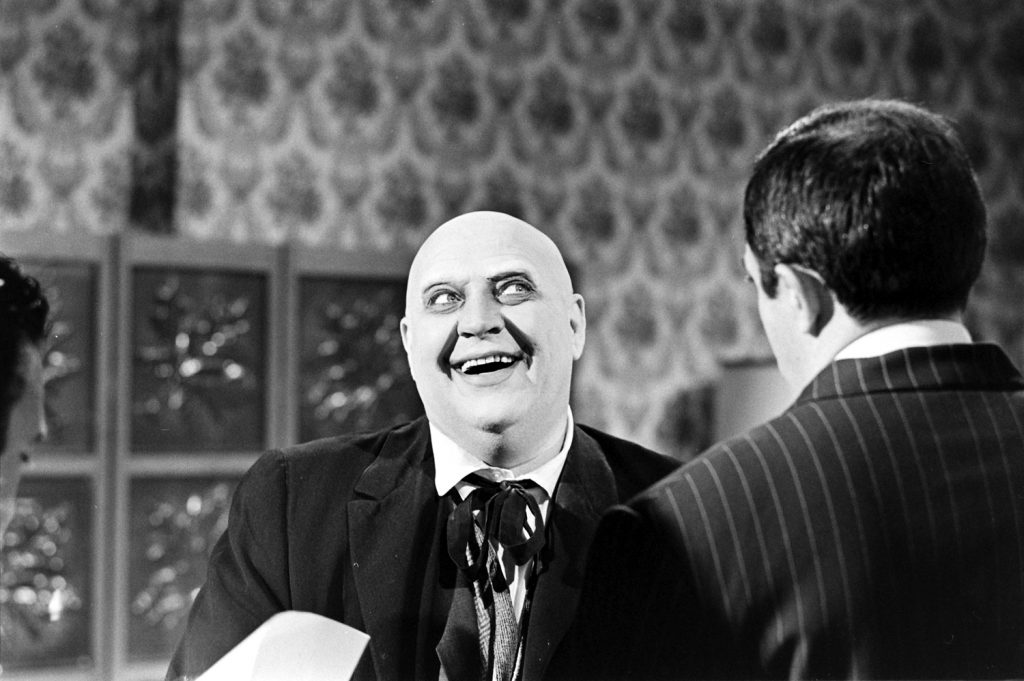Some familial surnames are so much a part of the American landscape that it’s difficult to discuss the country’s history, its highs and lows or its complex and often contradictory legacy without mentioning them. The Roosevelt family. The Kennedy family. The Addams family.
Consider the relevance and the cultural reach of the latter. Gomez, Morticia, Uncle Fester, Lurch and the rest have been around, in various incarnations, for eight decades. Created in the 1930s by the legendary cartoonist, Charles Addams, the endearingly macabre family and assorted friends, neighbors and things have appeared in magazines (most notably The New Yorker), books, movies, on Broadway and, of course in a short-lived but fondly remembered 1960s TV series. A later, not-terrible animated series ran for a few seasons as a Saturday morning cartoon in the mid-Seventies.
Here, LIFE.com takes a look back at the auditions for the show; some of the actors and actresses who ended up in the cast; and a number of others (largely unidentified in LIFE’s archives) who didn’t get cast.
In an article titled, “TV’s Year of the Monster,” meanwhile, in the Aug. 21, 1964, issue of LIFE, the magazine referenced The Addams Family as well as Bewitched and The Munsters in its preview of the networks’ fall lineups:
They’ve come alive, the whole creepy, crawly Charles Addams family! And what’s more . . . Mr. Addams’ ghoulish people will be but a small part of the monster population explosion at prime evening time.
Cowboys, surgeons and hillbillies have had their day. Now it’s the Year of the Ghouls, and the new fall season, which will burst upon us next month like a spray of lightning over Frankenstein’s castle, will be strictly from beyond the grave. Only let parents have no qualms it will be played solely for guffaws.
Finally, it’s worth noting that while Charles Addams himself was often depicted as a perverse and perhaps even sinister character straight out of one of his own cartoons, that persona was largely for show. As one of his obituaries pointed out when he died in 1988, at the age of 76, “a colleague at The New Yorker once described Addams as ‘an urbane, relaxed, congenial man of great civility. He doesn’t eat babies.'”
“He doesn’t eat babies.” What higher praise for any man?
Liz Ronk edited this gallery for LIFE.com. Follow her on Twitter at @LizabethRonk.

The cast of ABC’s “The Addams Family,” 1964.
Don Cravens The LIFE Images Collection/Shutterstock

An unidentified actor auditioned for the role of Uncle Fester, 1964.
Bill Ray The LIFE Picture Collection/Shutterstock

John Astin (Gomez) with various actresses who auditioned for the role of Morticia Addams, 1964.
Bill Ray The LIFE Picture Collection/Shutterstock

John Astin with an actress auditioning for the role of Morticia Addams, 1964.
Bill Ray The LIFE Picture Collection/Shutterstock

Scene during auditions for “The Addams Family” TV show, 1964.
Bill Ray The LIFE Picture Collection/Shutterstock

These girls auditioned for the role of Wednesday Friday Addams—including Lisa Loring, at left, who was eventually cast.
Bill Ray The LIFE Picture Collection/Shutterstock

A makeup artist with an actor (possibly Jackie Coogan) who auditioned for the role of Uncle Fester, 1964.
Bill Ray The LIFE Picture Collection/Shutterstock

A would-be Morticia Addams, 1964.
Bill Ray The LIFE Picture Collection/Shutterstock

John Astin (right) with an actor who auditioned for the role of Lurch.
Bill Ray The LIFE Picture Collection/Shutterstock

Actors who tried out for the part of Lurch, 1964.
Bill Ray The LIFE Picture Collection/Shutterstock

Ted Cassidy was cast as Lurch—and his hand was also occasionally seen onscreen as Thing.
Bill Ray The LIFE Picture Collection/Shutterstock

John Astin, 1964.
Bill Ray The LIFE Picture Collection/Shutterstock

John Astin with Ken Weatherwax (left), who was cast as Pugsley.
Bill Ray The LIFE Picture Collection/Shutterstock

Boys who tried out for part of Pugsley—including Ken Weatherwax, at right, who was cast in the role.
Bill Ray The LIFE Picture Collection/Shutterstock

John Astin with an actor auditioning for the role of Uncle Fester, 1964.
Bill Ray The LIFE Picture Collection/Shutterstock

John Astin with an actress auditioning for the role of Morticia, 1964.
Bill Ray The LIFE Picture Collection/Shutterstock

Unidentified actresses who tried out for the role of Morticia Addams, 1964.
Bill Ray The LIFE Picture Collection/Shutterstock

An actress who tried out for the role of Morticia Addams, 1964.
Bill Ray The LIFE Picture Collection/Shutterstock

An actress who tried out for the part of Grandmama Addams. (Blossom Rock eventually won the role.)
Bill Ray The LIFE Picture Collection/Shutterstock

Aug. 21, 1964 issue
LIFE Magazine

Aug. 21, 1964 issue
LIFE Magazine



































































































